
Roots
Consider a single strand of hair, born from the depths of a scalp, spiraling, coiling, or waving into existence. For those of African lineage, this single strand holds more than mere biological information. It carries echoes of ancient landscapes, the resilience of generations, and the profound wisdom passed across countless sunrises. It is within these unique formations, this textured inheritance, that we begin to grasp how traditional hair practices serve as enduring markers of Black identity.
Our journey commences at the very source, in the elemental biology of textured hair, understood not just through modern scientific lenses, but through the profound, ancestral gaze that recognized its intrinsic value and spiritual weight long before microscopes existed. This knowledge, passed through oral histories and lived experiences, forms the genesis of a rich heritage, a silent language spoken through every coil and curve.
The very structure of textured hair sets it apart. Where European hair often descends in a cylindrical, straight shaft, Afro-textured hair emerges with an elliptical or flattened cross-section, its internal disulfide bonds arranging themselves in a manner that encourages its characteristic coiling. This structural difference, a biological marvel, dictates how light reflects, how moisture behaves, and how individual strands interact with one another to build volume and form. Ancient African societies possessed an innate understanding of these unique qualities.
They didn’t classify hair by numeric types as modern systems might; rather, they understood its living spirit, its connection to vitality and status. The meticulous attention given to hair was not simply cosmetic; it was a societal barometer, a spiritual conduit, and a historical record, all at once.
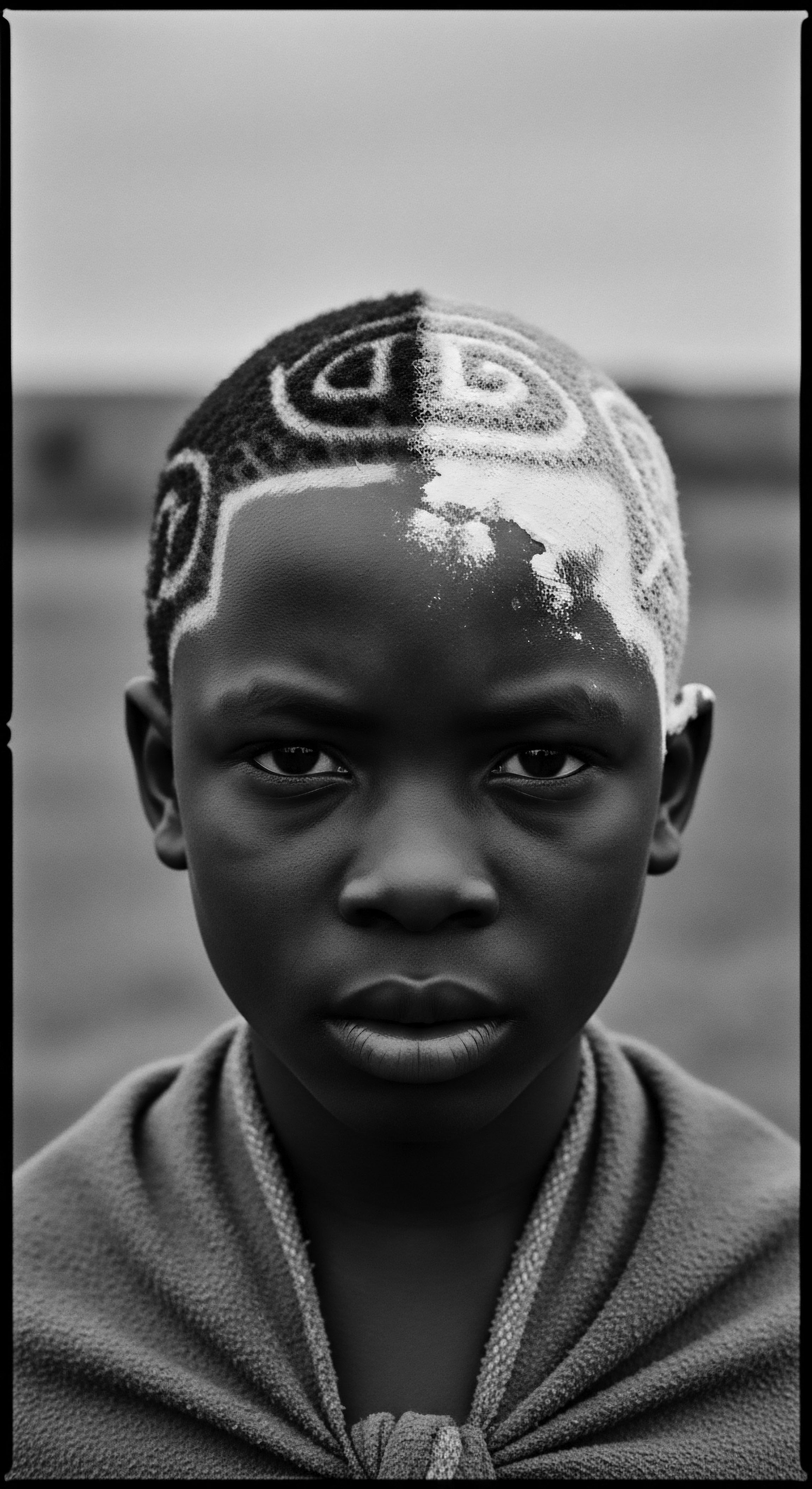
Hair Anatomy and Nomenclature Through Time
For ancestral communities, hair was a direct extension of self and community, with its presentation communicating a wealth of personal and collective information. The way hair behaved, its growth patterns, and its natural characteristics, were observed and honored. This deep observation led to traditional nomenclatures, names for styles and textures that were often descriptive of natural forms or the actions involved in their making.
Think of names like Bantu Knots, a term widely known today, whose roots reach back to a family of languages spoken across much of Africa, signifying a shared heritage of stylistic ingenuity. Or the term Locs, a modern word for an ancient practice of hair cultivating into rope-like strands, revered in various spiritual traditions for centuries.
- Melanin Distribution ❉ The natural pigments that provide hair color are distributed differently in textured hair, contributing to its varied hues and light-reflecting properties.
- Cuticle Layer ❉ Textured hair often features a more open, raised cuticle, which can affect moisture retention and susceptibility to external factors.
- Follicle Shape ❉ The curved nature of the hair follicle itself is a primary determinant of curl pattern, giving rise to the spirals and zig-zags characteristic of Afro-textured hair.
These biological specifics, whether understood through indigenous wisdom or modern scientific inquiry, underscore the necessity of traditional practices that work with the hair’s inherent nature. Traditionalists recognized the delicate balance required for nourishment, protection, and manipulation of these unique strands. Their understanding predated the modern era’s attempts at chemical alteration, instead focusing on holistic health and the preservation of natural form.
The intrinsic structure of textured hair forms the biological canvas upon which Black identity has historically been rendered.
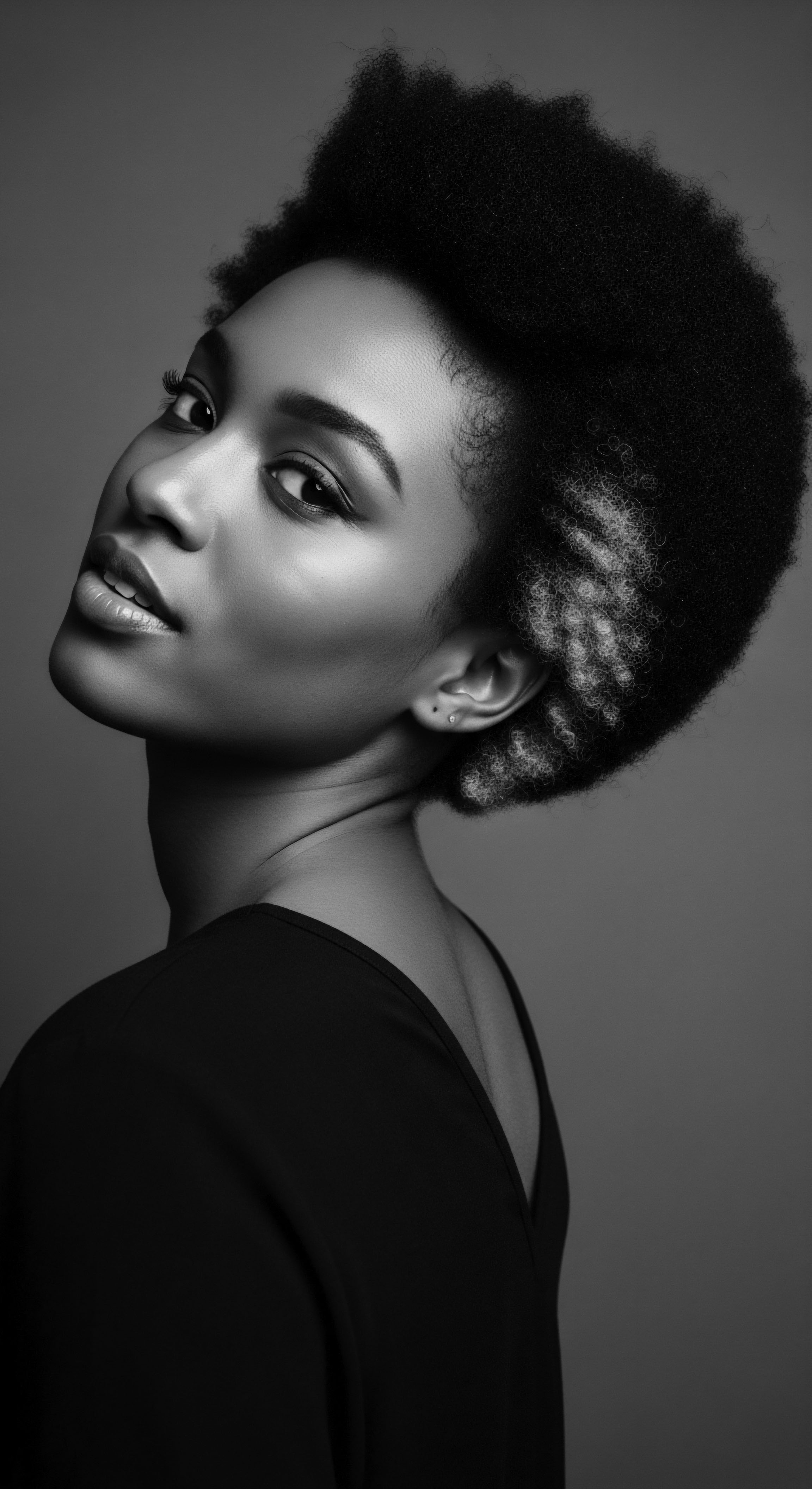
Connecting Ancient Knowledge to Modern Understanding
The traditional lexicon surrounding textured hair often held more cultural weight than simple descriptors. A hairstyle could communicate one’s geographic origin, their marital status, age, religious conviction, or societal standing. For instance, among the Yoruba people, hair was regarded as the most elevated part of the body, a site of spiritual power. Braided styles were believed to carry messages to the gods.
This spiritual veneration of hair meant that its care was not a mundane task, but a sacred ritual, performed with intention and reverence. The very act of preparing and adorning hair was a social opportunity, a moment for bonding with kin and friends, a tradition that persists to this day.
The historical record speaks of hair’s immense social and spiritual significance. In ancient Kush and Kemet (present-day Sudan and Egypt), archaeological finds include combs fashioned from wood, bone, and ivory, buried with their owners, evidencing hair’s sacred status and the tools used in its preparation. These combs, dating back as far as 7,000 years, often bore engravings of symbols reflecting tribal identity, fertility, or even protection, signaling their role as more than mere grooming implements; they were artifacts of art, legacy, and power. The Afro Comb, with its deep history, became a potent symbol of Black identity, serving as both a functional tool and, later, a political emblem, particularly during the Civil Rights and Black Power movements.
| Aspect of Hair Hair as Symbol |
| Ancestral Understanding (Heritage) Communicated social status, age, marital status, tribal ties, spiritual connection. Considered a locus of life force and communication with the divine. |
| Contemporary Scientific Perspective Recognized for its psychosocial impact, reflecting individual identity, cultural affiliation, and often a site of discrimination or expression. |
| Aspect of Hair Hair Care Methods |
| Ancestral Understanding (Heritage) Focused on natural ingredients (oils, butters), protective styles, communal grooming, spiritual cleansing. |
| Contemporary Scientific Perspective Analysis of molecular structure, cuticle health, moisture science; development of specialized products for curl patterns. |
| Aspect of Hair Tools Used |
| Ancestral Understanding (Heritage) Hand-carved combs from natural materials (wood, bone, ivory), rudimentary braiding tools, natural fibers for adornment. |
| Contemporary Scientific Perspective Ergonomically designed brushes, heat-protectant styling tools, micro-fiber towels, advanced detangling instruments. |
| Aspect of Hair The continuity of care, though refined by science, finds its deepest roots in practices steeped in tradition and cultural purpose. |
This historical lens reveals that traditional hair practices were never isolated acts of grooming. Instead, they were integral components of a communal life, rituals that reaffirmed belonging, expressed individual standing, and preserved a distinct cultural cosmology. The very act of tending to textured hair, from ancient times through the diaspora, has been a defiant declaration of self, a preservation of identity against forces that sought to erase it.
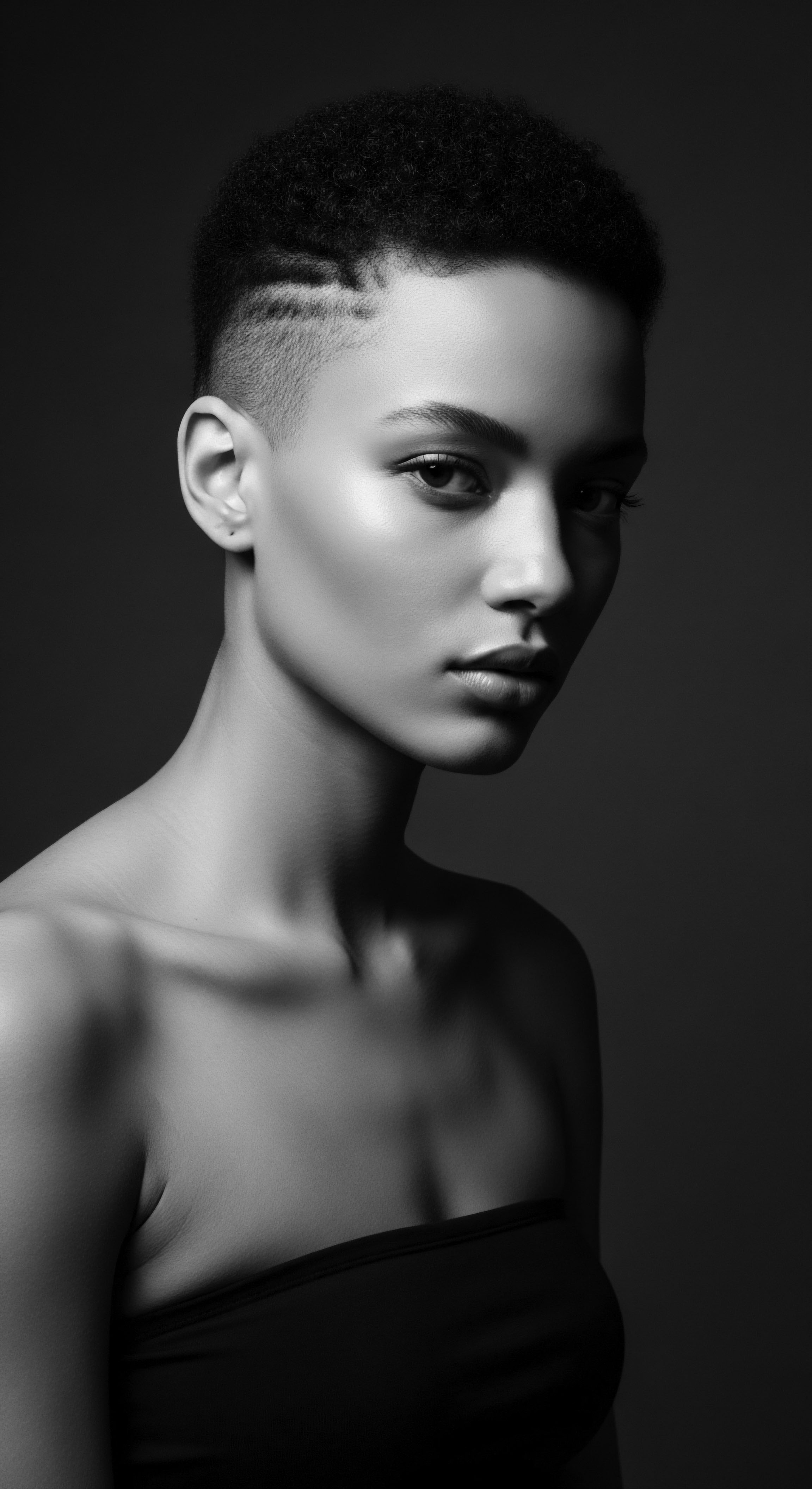
Ritual
The history of Black hair is a living narrative, expressed through the techniques and tools that transformed strands into stories, rituals into heritage. Beyond the foundational understanding of hair’s physical nature, traditional practices formed a complex web of artistry and communal connection. These were not simply methods for aesthetic appeal; they were acts of care, of resistance, and of communication, deeply intertwined with the experiences of Black and mixed-race communities across time and geography. The hands that braided, twisted, and styled carried ancestral knowledge, each movement a continuation of a profound legacy.
The act of hair care, often prolonged and communal, became a sacred space. Imagine the hours spent in the shade of a tree, or by a fireside, fingers deftly working through coils, sharing stories, wisdom, and laughter. These were moments of intimacy, of intergenerational learning, where techniques were passed down without written instruction, relying on observation, touch, and the rhythm of shared presence.
This tradition of communal grooming was a powerful social glue, reinforcing familial bonds and community cohesion. It was within these shared rituals that identity was not only preserved but actively shaped and celebrated.
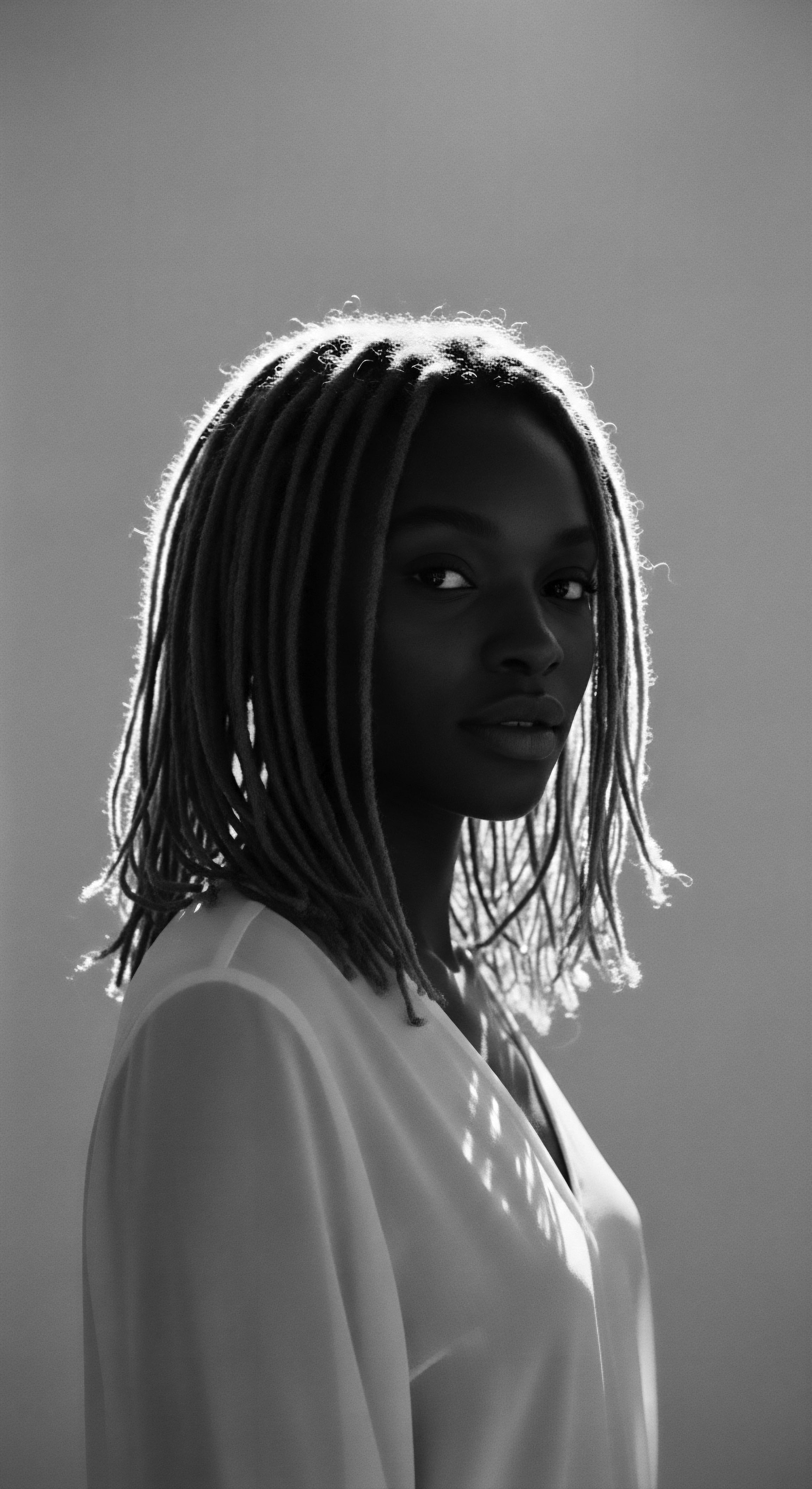
How Traditional Styling Guarded Heritage and Freedom?
The styling of textured hair, particularly braiding, holds a story of incredible ingenuity and survival during one of history’s darkest chapters. During the transatlantic slave trade, millions were forcibly removed from their homelands, stripped of names, languages, and cultural markers. In this brutal context, hair became a silent, yet potent, repository of heritage and a tool of resistance.
Enslaved Africans, facing immense pressure to conform to Eurocentric appearances, found ways to subvert the efforts to erase their cultural distinctiveness. They adapted their ancestral knowledge, using whatever resources were available—animal fats, plant oils, and rudimentary combs fashioned from wood or bone.
A powerful historical example of hair’s role in preserving identity and aiding survival comes from the use of Cornrows as covert maps. During the era of slavery, particularly in parts of South America like Colombia, enslaved people used intricate braided patterns in their hair to encode and transmit information about escape routes, safe houses, and even where to find water or stashed provisions. For instance, a specific pattern might represent a river, while another might indicate a mountain range or a particular trail.
Women would even hide rice grains or seeds within their braids, not only for sustenance during escape but with the hope of planting them to cultivate new life upon reaching freedom, thereby symbolically carrying their homeland’s agricultural heritage with them. This deeply clandestine communication method was effective because slaveholders often disregarded or misunderstood the complex artistry of Black hairstyles, viewing them through a biased lens as primitive or unkempt.
Braided narratives, once hidden on the scalp, reveal how Black hair served as a silent architect of liberation and a vessel for cultural continuity.
These practices underscore the deep connection between hair and identity; hair was not simply fiber, but a living medium for memory, resistance, and the collective hope for freedom. The very act of maintaining these styles, often under harsh conditions, was a defiance against dehumanization and a profound affirmation of self.
- The Caracol ❉ A coiled or spiral braid style, often believed to represent the winding paths of rivers, guiding escapees.
- The Puerca Parida ❉ Translating to “farrowed sow,” this style involved thick braids tied into buns, reportedly signaling a readiness to flee.
- Seeds and Gold ❉ Small seeds or even gold nuggets were concealed within the braids, providing vital sustenance or currency for those seeking a new beginning.
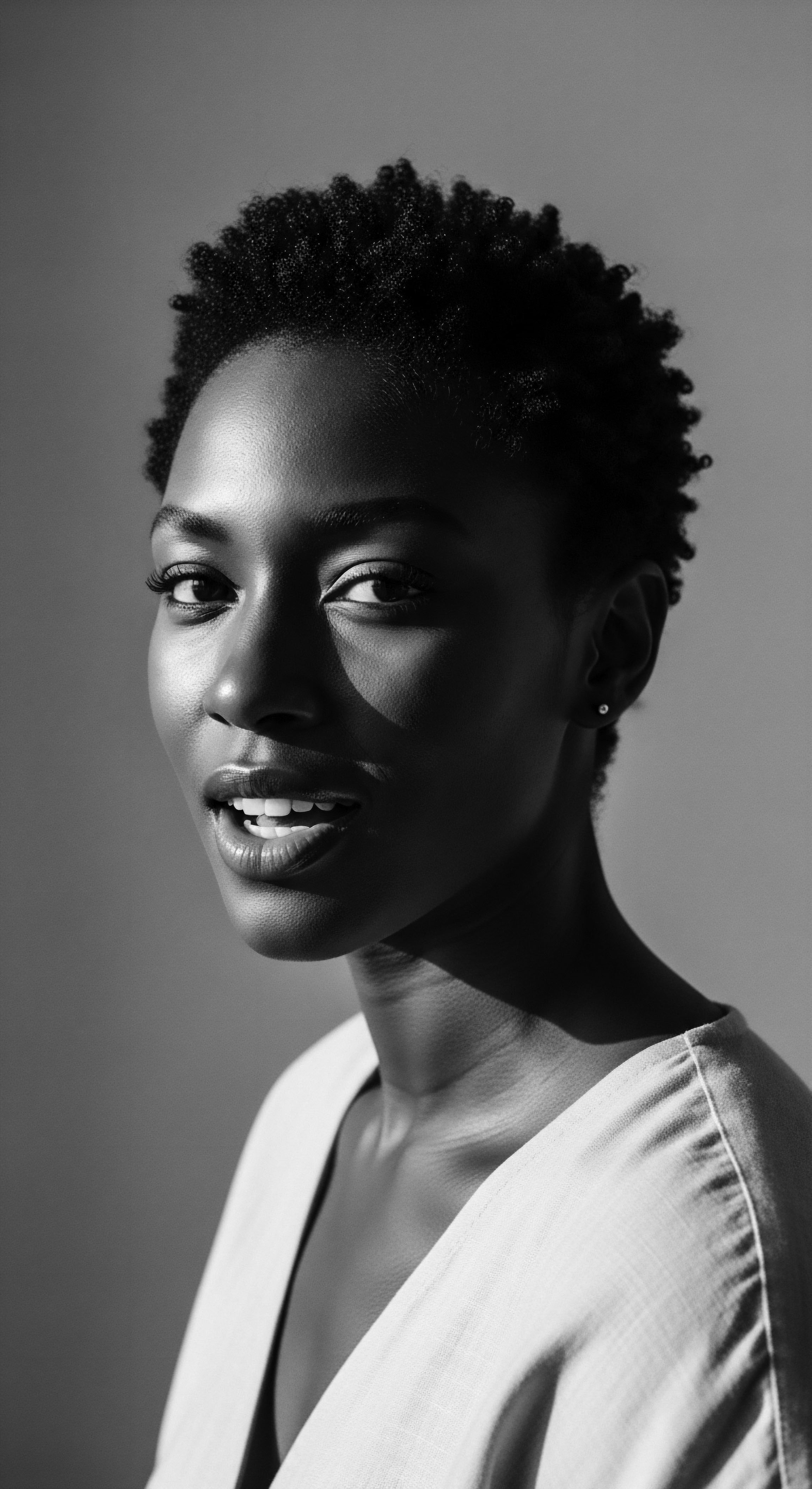
Traditional Tools and Their Lingering Echoes
The tools used in traditional hair care are as significant as the techniques themselves. The earliest combs unearthed in African civilizations, some dating back 7,000 years to Kush and Kemet, were meticulously carved from organic materials and often bore symbolic adornments. These were not mass-produced implements but personal artifacts, infused with meaning and purpose. The wooden comb, particularly the Ghanaian Dua’afe, is historically linked to femininity and beauty, its very form a reflection of cultural values.
As the diaspora unfolded, communities in new lands adapted, often improvising tools from available materials—metal scraps, animal bones, or repurposed wood. This resourcefulness speaks to the unwavering commitment to hair care practices, even when traditional implements were scarce. The knowledge of how to craft a comb, how to section hair without a mirror, how to apply natural emollients for shine and protection—this was the heritage, passed through hands and memory, a testament to an enduring cultural spirit. The continuity of these practices, even in modified forms, served to anchor Black identity in new, often hostile, environments.
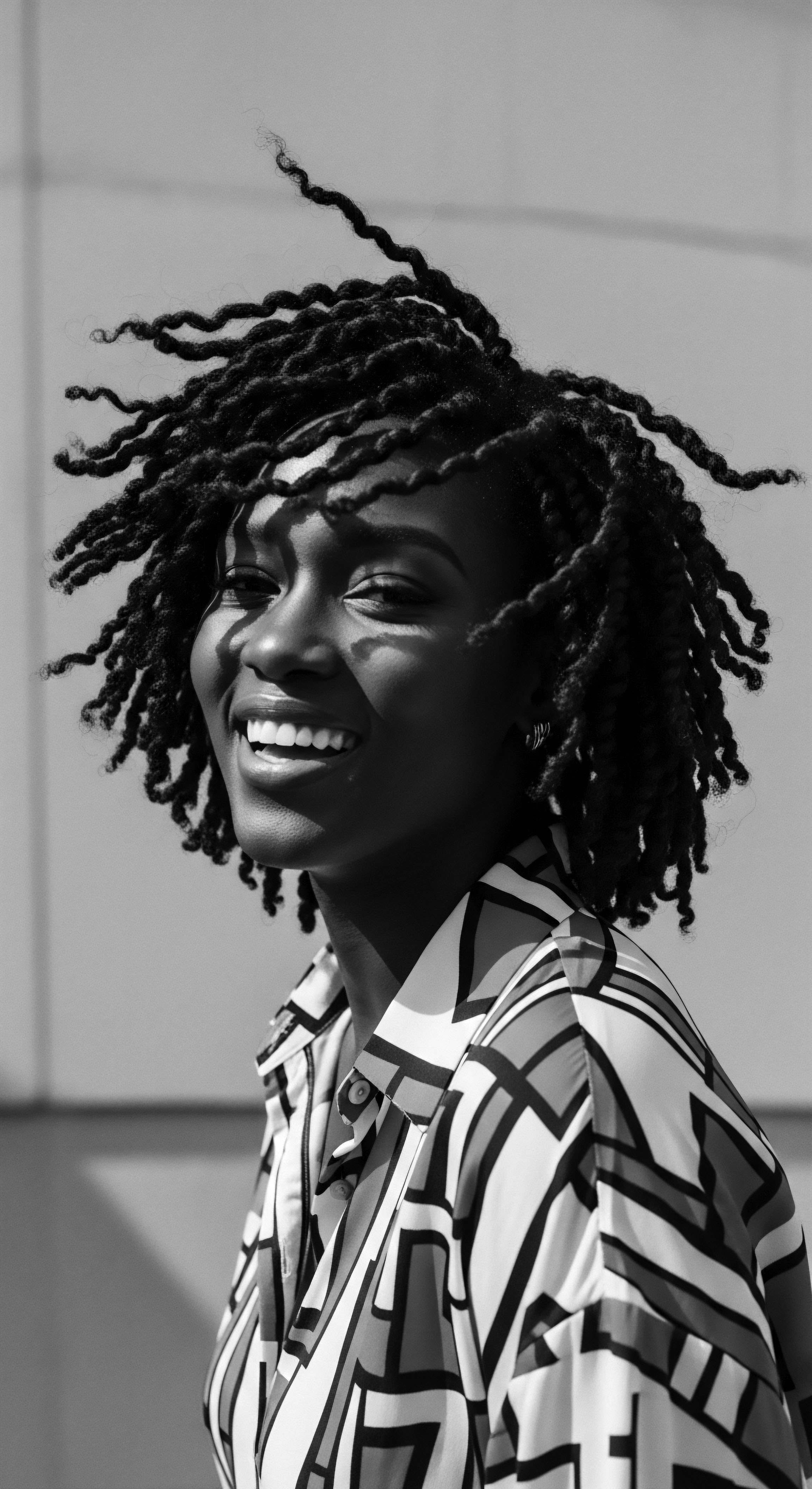
Relay
The resonance of traditional Black hair practices echoes through the corridors of contemporary life, asserting identity and shaping futures in profound ways. These enduring customs are not relics confined to historical archives; they are dynamic, living traditions that continue to inform self-perception, cultural expression, and social dialogue today. The journey of textured hair, from its elemental source to its current vibrant manifestation, represents a continuous act of affirmation, a testament to the power of heritage against persistent pressures of assimilation.
In many communities, the intimate ritual of hair care, passed from elder to youth, remains a foundational experience. The quiet moments spent detangling, oiling, and styling hair serve as conduits for narratives, for sharing family histories, and for reinforcing cultural pride. This intergenerational transmission of knowledge cultivates a deep respect for natural hair and the ancestral wisdom that guides its care. It is a subtle, yet powerful, daily act of preserving identity in a world that often seeks to standardize beauty according to narrow, Eurocentric norms.
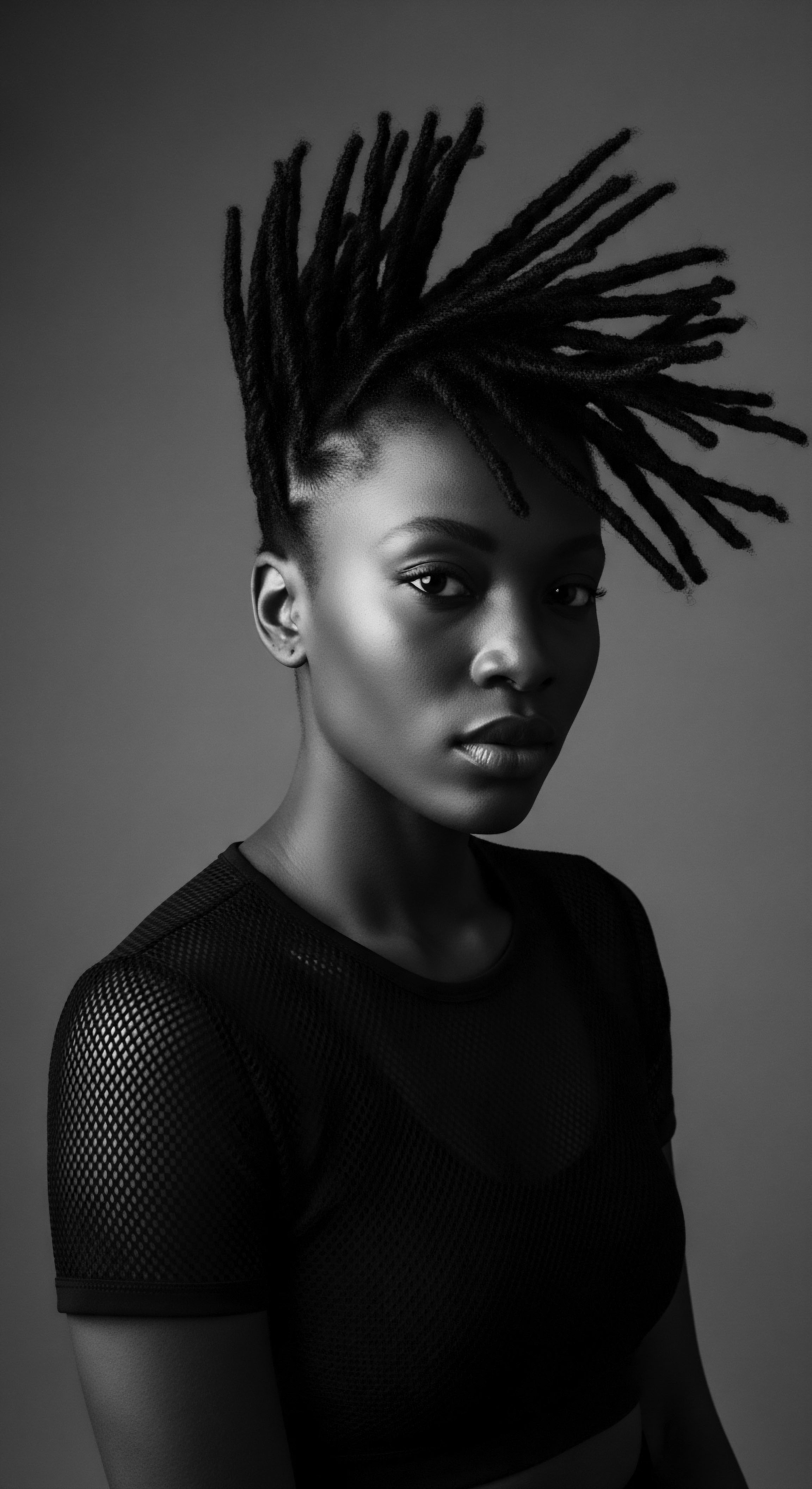
Why Do Modern Hair Practices Reflect Ancestral Wisdom?
Contemporary protective styling, for example, directly descends from ancient African methods designed to safeguard hair from environmental elements and manipulation. Styles like Box Braids, Twists, and Bantu Knots, while having gained global popularity, stand as direct continuations of millennia-old practices. These styles not only promote hair health by minimizing breakage and encouraging growth, but they also connect wearers to a lineage of artistic expression and practical wisdom. They are a visible proclamation of heritage, a choice to honor one’s roots while moving through modern spaces.
The holistic approach to hair care, prioritizing scalp health, moisture retention, and natural ingredients, also finds its basis in ancestral wellness philosophies. Traditional African societies utilized a diverse array of botanicals, oils, and butters – like Shea Butter, Coconut Oil, and various plant extracts – for their restorative and protective properties. Modern science now validates many of these traditional ingredients, understanding their molecular benefits for textured hair, reinforcing the foresight of those who came before. This symbiosis of ancient wisdom and contemporary scientific understanding allows individuals to craft personalized regimens that are both effective and culturally resonant.
The enduring significance of traditional hair practices becomes starkly visible when examining the challenges Black individuals continue to face concerning their hair in professional and educational environments. Despite the historical richness and cultural importance of natural hair, policies rooted in Eurocentric beauty standards have long discriminated against styles like Afros, braids, locs, and twists. This discrimination, often labeling natural Black hair as “unprofessional” or “unkempt,” serves as a direct attack on identity and a barrier to opportunity.
For instance, a 2023 CROWN Workplace Research Study, co-commissioned by Dove and LinkedIn, found that Black women’s hair is 2.5 times more likely to be perceived as unprofessional. This same study revealed that 66% of Black women alter their hair for a job interview, with 41% straightening their hair to conform to perceived corporate expectations. This statistical reality underscores that traditional hair practices, when worn openly, remain a potent, often challenging, assertion of Black identity in spaces historically designed for its suppression.
- Moisture Retention Strategies ❉ Layering practices and the use of occlusive agents such as natural butters or oils to seal in moisture, a method long practiced in African communities.
- Protective Styling Longevity ❉ Techniques like braiding and twisting that reduce daily manipulation, allowing hair to rest and minimize breakage over extended periods.
- Scalp Wellness ❉ Regular scalp massages with nourishing oils and herbal infusions to promote blood circulation and follicle health, an ancient ritual for hair vitality.
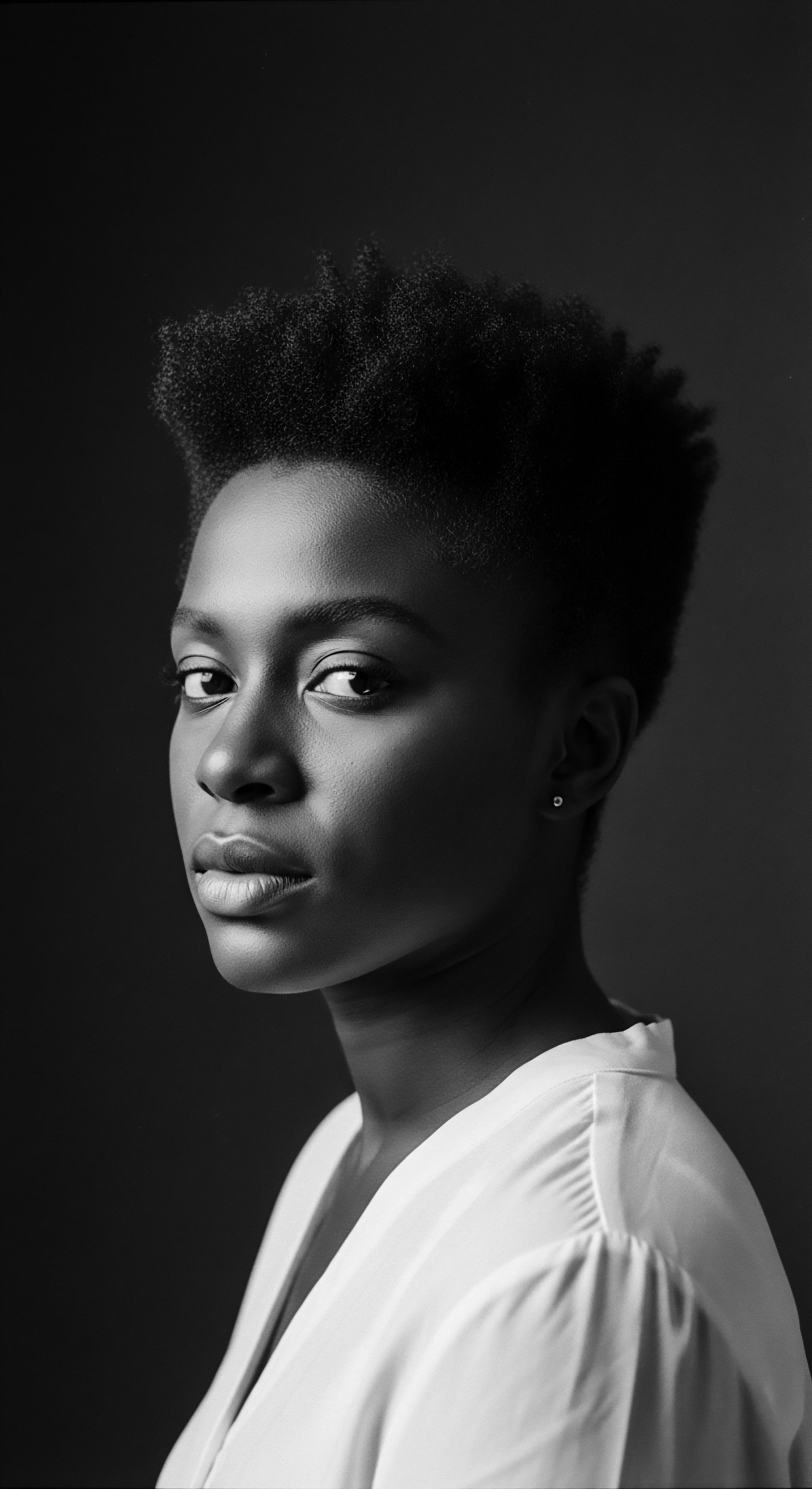
From Resistance to Reclamation ❉ Shaping the Future
The political dimension of Black hair, historically a quiet defiance, burst into widespread consciousness during the Civil Rights and Black Power movements of the 1960s and 70s. The Afro, a voluminous, natural style, became a symbol of racial pride, self-acceptance, and a rejection of imposed beauty standards. It was a visual declaration of “Black is Beautiful,” asserting the inherent aesthetic worth of Afrocentric features. This era saw the Afro comb, particularly the version with a raised fist motif, transform into a recognizable emblem of empowerment and solidarity, worn not just for styling but as a public statement of identity and resistance.
The modern movement to combat hair discrimination, exemplified by the CROWN Act (Creating a Respectful and Open World for Natural Hair), stands as a powerful continuation of this struggle for self-determination. This legislation, passed in various states across the U.S. prohibits discrimination based on hair texture or protective styles in workplaces and schools.
The CROWN Act acknowledges that the right to wear one’s hair naturally is inseparable from the right to self-expression and cultural identity, recognizing that hair discrimination is a manifestation of institutional racism. The widespread support for such legislation signifies a collective commitment to protecting and validating textured hair heritage for future generations.
The continued practice and celebration of traditional hair artistry ensure that Black identity remains deeply rooted in a rich historical and cultural landscape. Each braid, each coil, each strand, carries the weight of ancestors who used their hair to survive, to communicate, and to express their very being. The future of Black hair is not only about scientific advancement or new product innovation; it is about sustaining this profound heritage, allowing it to adapt, to inspire, and to continue to serve as a luminous declaration of selfhood and belonging. The choices made about hair today, whether rooted in ancestral techniques or informed by them, resonate with a lineage of profound significance.
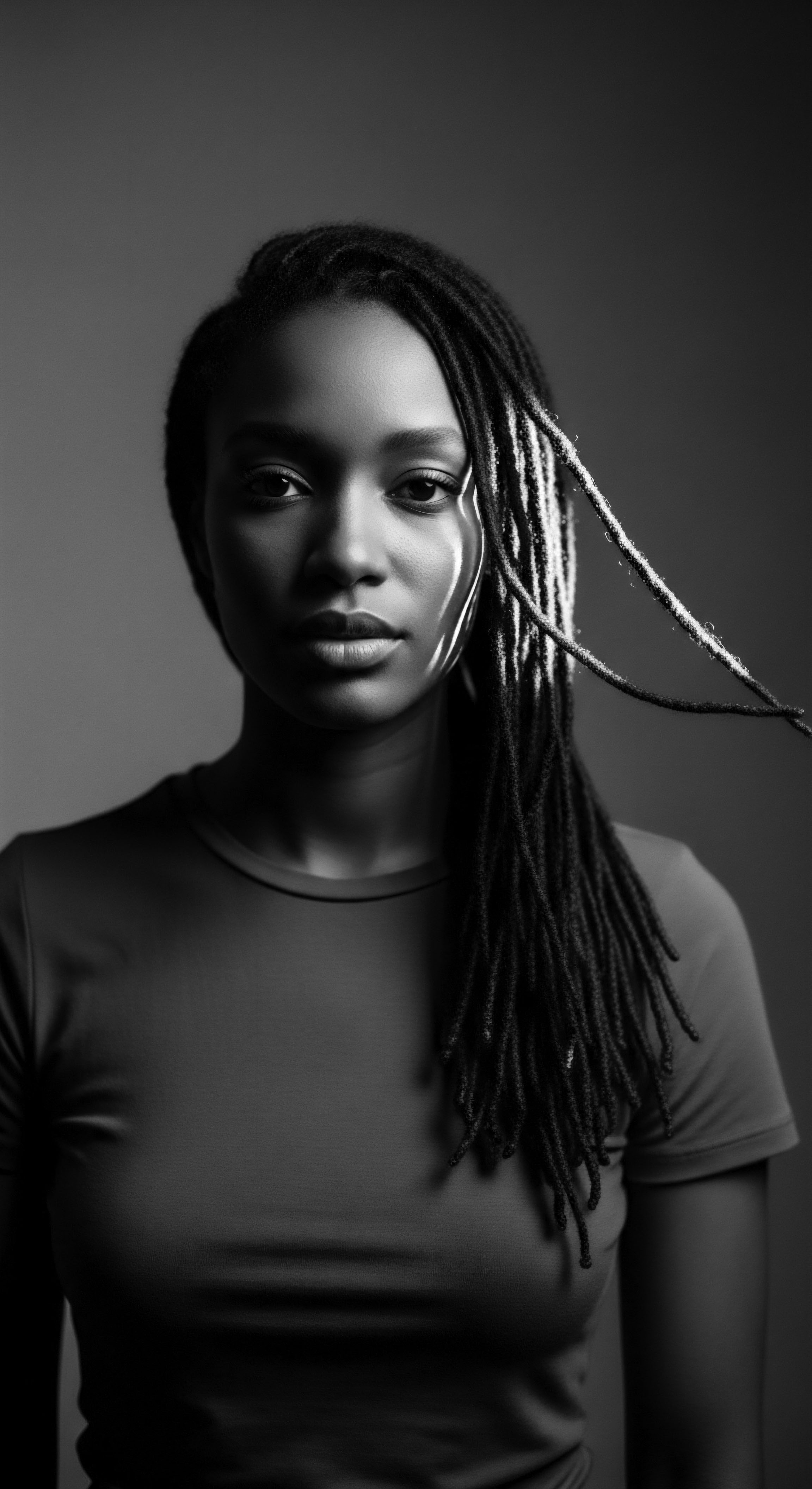
Reflection
When we speak of textured hair, we are not simply discussing a physiological attribute; we speak of a living archive, a narrative spun from generations of existence, resistance, and boundless creativity. Roothea’s ‘Soul of a Strand’ ethos finds its deepest truth in this understanding ❉ that every coil, every curl, every resilient hair on a Black or mixed-race head carries within it the whisper of heritage. Traditional hair practices, far from being mere customs, have been vital conduits, preserving and transmitting Black identity through eras of profound challenge and vibrant celebration. They are the ancestral handprints on our present, reminding us that beauty, resilience, and belonging are deeply ingrained, not just in our spirit, but in the very fiber of our being.
The dedication to these practices, whether through the communal braiding circles of antiquity or the determined acts of self-care today, stands as a testament to an unbreakable spirit. It is the wisdom of those who came before us, a quiet counsel whispered through the touch of comb and strand, ensuring that the unique story of Black identity, one strand at a time, remains unbound, vibrant, and eternally recognized.

References
- Fitzwilliam Museum, University of Cambridge. (n.d.). Origins of the Afro Comb. Project information.
- Childish Mane LLC. (2023). ROAD TO FREEDOM ❉ How Enslaved Africans in America Used Hair Styles to Map Escape Routes.
- CurlyTreats. (2025). Afro comb ❉ the cultural and political legacy behind this iconic hair tool.
- Legal Defense Fund. (n.d.). Hair Discrimination FAQ.
- Reddit. (2025). Recreation of African hairstyles (Pre-Colonial).
- Africa Rebirth. (2022). The African Tales of The Historical 7000 Year Old Afro Comb.
- Ancient Origins. (2022). African Slaves Used Braids to Communicate Escape Routes in Colombia.
- TestGorilla. (n.d.). How hair bias affects Black women in the workplace.
- University of Salford Students’ Union. (2024). The Remarkable History Behind Black Hairstyles.
- Our Ancestories. (2021). The Evolution of the Afro Comb.
- Princeton University Art Museum. (n.d.). Hair and the Head.
- Synergi Salon. (2024). Afro Combs ❉ A Timeless Emblem of Black Identity and Empowerment.
- HR Dive. (2023). Two-thirds of Black women change their hair for job interviews, even as CROWN Act support grows.
- Applied Worldwide Nigeria. (2024). Hidden Messages in Cornrows for the People of Color.
- Afriklens. (2024). African Hairstyles ❉ Cultural Significance and Legacy.
- BLAM UK CIC. (2022). The history of Black Hair.
- Copyright. (2022). The Art of Healing ❉ A Nostalgic Ode to Black Hair Braiding.
- Folklife Magazine. (2022). It’s More Than “Just” Hair ❉ Revitalization of Black Identity.
- Economic Policy Institute. (2023). The CROWN Act ❉ A jewel for combating racial discrimination in the workplace and classroom.
- Strands of Inspiration ❉ Exploring Black Identities through Hair. (2023).
- BLAM UK CIC. (2022). The history of Black Hair.
- Dermatology Times. (2023). What Every Dermatologist Must Know About the History of Black Hair.
